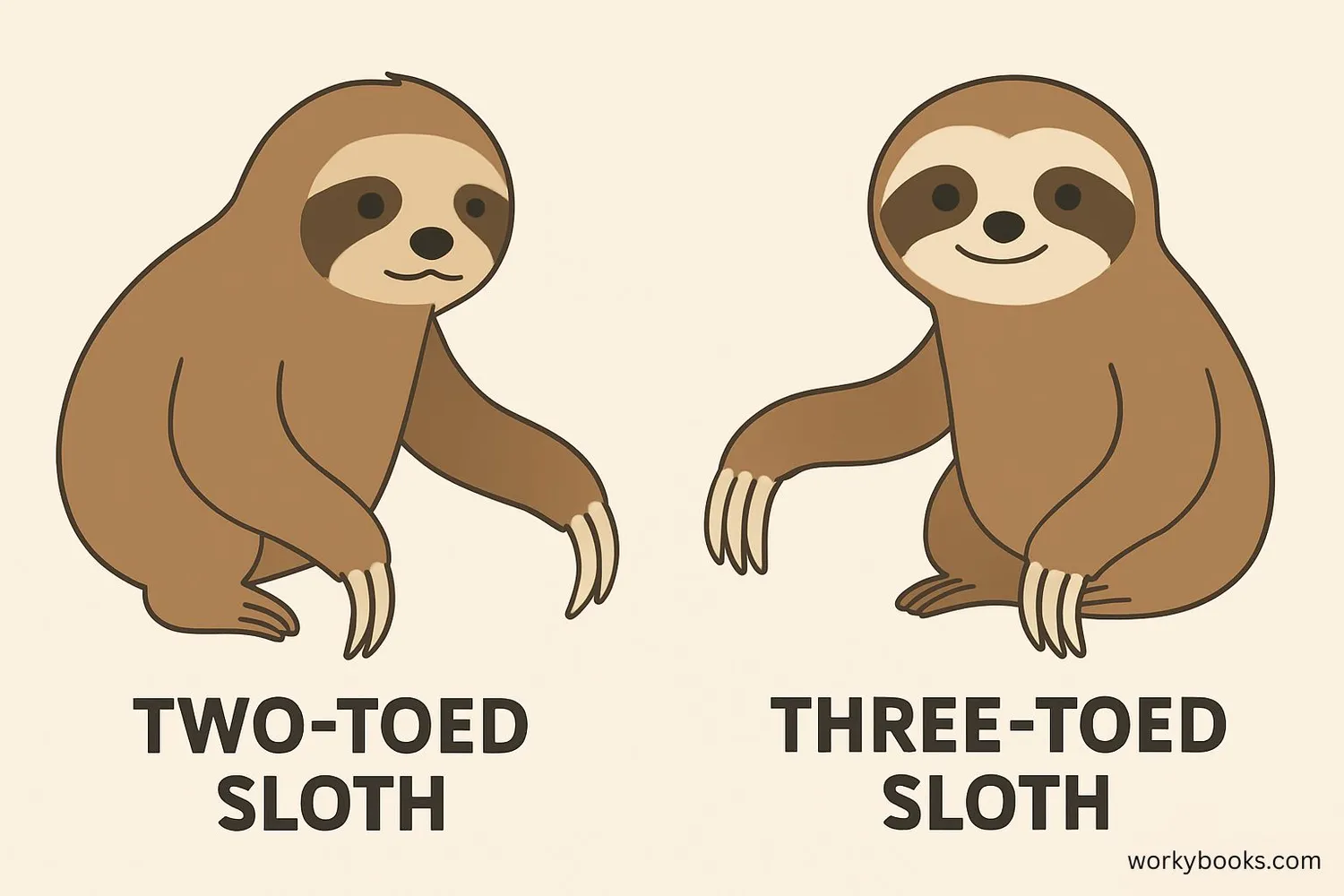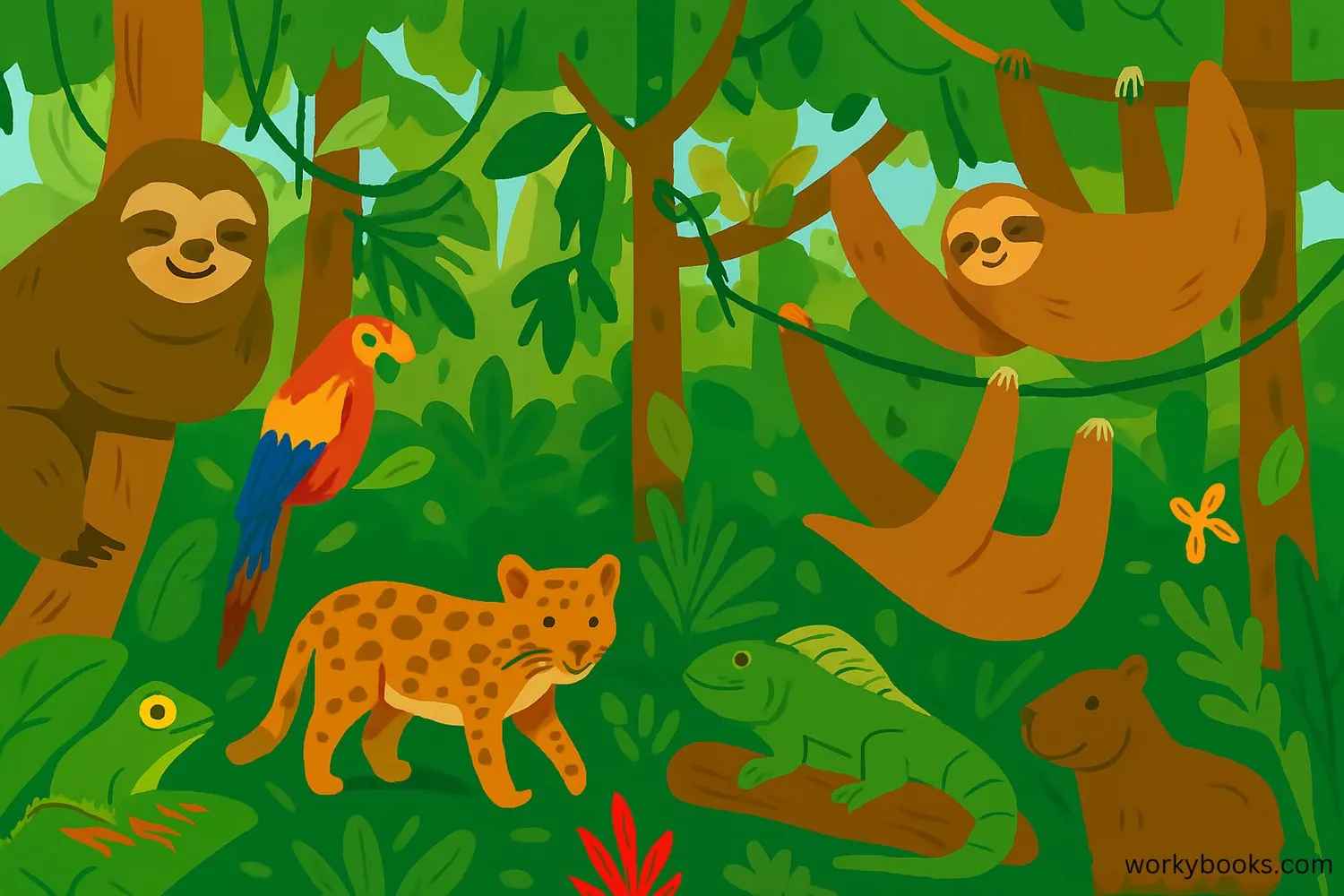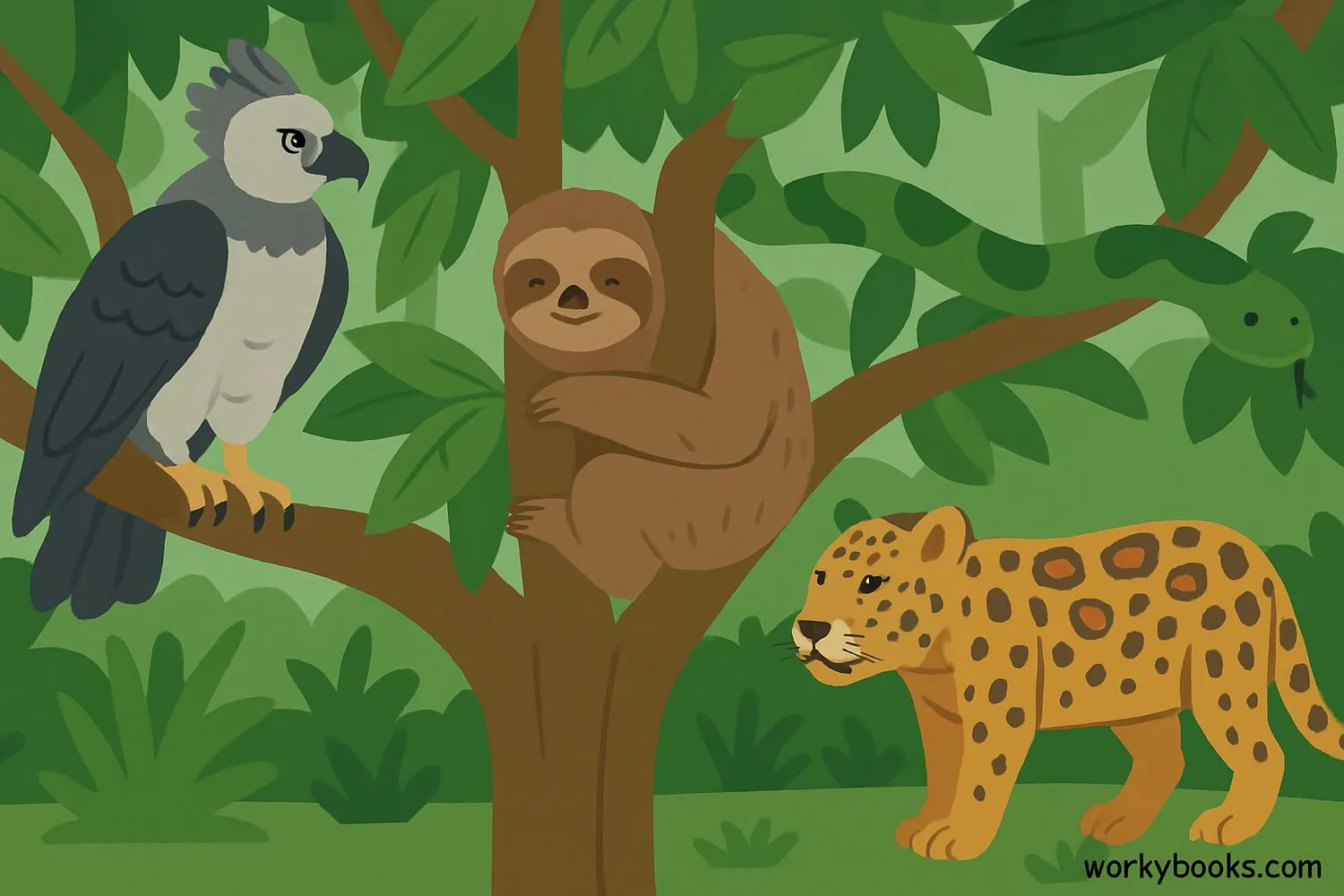Sloths: Nature's Slow-Paced Marvels - Definition, Examples, Quiz, FAQ, Trivia
Discover the fascinating world of these tree-dwelling mammals and their unique adaptations
What is a Sloth?

Sloths are fascinating mammals that live in the rainforests of Central and South America. They are known for their extremely slow movements and spend most of their lives hanging upside down in trees!
These unique animals have special adaptations that help them survive in their environment. Sloths have long curved claws that act like hooks, allowing them to hang from branches without using any energy. Their slow movement helps them conserve energy and avoid detection by predators.
Did You Know?
Sloths move so slowly that algae grows on their fur, giving them a greenish color that helps them camouflage in the trees!
Types of Sloths

There are two main types of sloths:
Two-toed Sloths
Have two claws on their front feet
Mostly nocturnal (active at night)
Slightly larger and faster than three-toed sloths
Three-toed Sloths
Have three claws on all feet
Diurnal (active during the day)
Famous for their permanent smile
Both types move slowly, but three-toed sloths are the slowest mammals on Earth! They travel only about 40 yards per day - less than half the length of a football field.
Sloth Habitat

Sloths live in the tropical rainforests of Central and South America. They spend nearly their entire lives in the trees of these forests, rarely coming down to the ground.
Their preferred habitats include:
• Tropical rainforests
• Cloud forests
• Mangrove forests
Sloths are specially adapted to life in the trees. Their long claws allow them to grip branches securely, and their slow movements help them avoid detection by predators. They even sleep, eat, and give birth while hanging from branches!
Habitat Fact!
Sloths only come down from trees about once a week to go to the bathroom!
Sloth Diet

Sloths are herbivores, which means they only eat plants. Their diet mainly consists of:
Leaves
Their primary food source
Twigs & Buds
Supplemental nutrition
Fruit
Occasional sweet treat
Sloths have a very slow digestive system - it can take up to a month for them to digest a single meal! This is why they move so slowly and conserve energy whenever possible.
Their diet is low in nutrients, so they have to eat large quantities of leaves to get enough energy. This slow digestion also means they don't need to eat very often.
Sloth Predators

Despite their slow speed, sloths have developed effective ways to avoid predators:
Camouflage
Algae growth makes them blend with trees
Slow Movement
Hard for predators to spot them
Tree Living
Stay high in the canopy away from danger
Main predators of sloths include:
• Harpy eagles
• Jaguars
• Ocelots
• Anacondas
When threatened, sloths can defend themselves with their sharp claws, though they prefer to avoid confrontation. Their main defense is staying still and blending into their surroundings.
Sloth Quiz
Test your sloth knowledge with this fun quiz! Answer all 5 questions to see how much you've learned.
Frequently Asked Questions
Here are answers to some common questions about sloths:
Fun Sloth Trivia
Discover some amazing facts about sloths!
Slow Motion Masters
Sloths are the slowest mammals on Earth! Their top speed is only about 0.24 km/h (0.15 mph).
Flexible Necks
Sloths can rotate their heads up to 270 degrees, almost as much as an owl! This helps them look around without moving their bodies.
Temperature Regulation
Sloths can't shiver to stay warm like other mammals. Instead, they bask in the sun to raise their body temperature.
Surprising Strength
Despite their slow movements, sloths have incredibly strong muscles. They can hold their entire body weight with just one foot!


